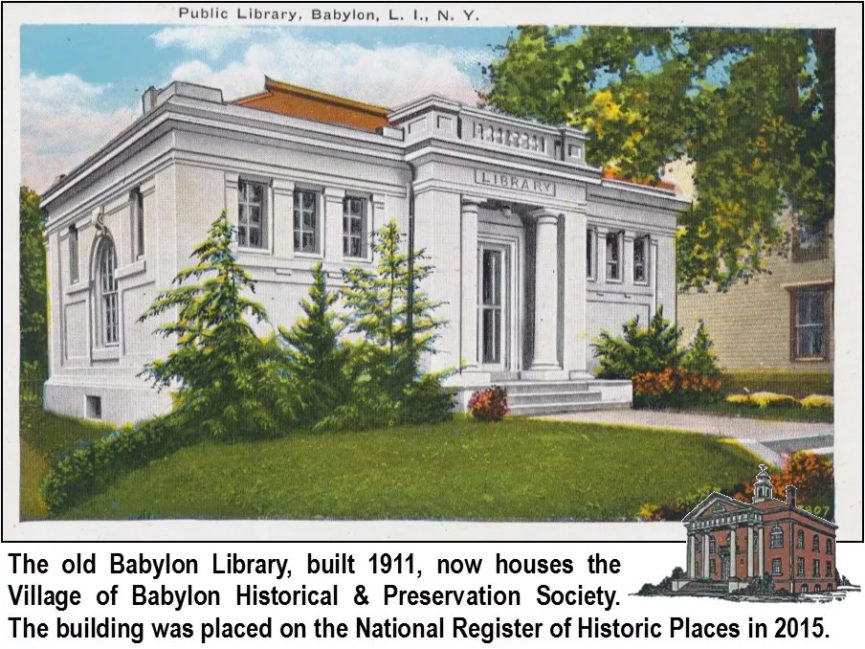Historical tidbits from 100 years ago . . .
The first money raised for the building was $150 and it came from the proceeds of a concert in 1896. Over 140 donations were received to the building fund, ranging from $500 to fifty cents. It took over fifteen years and countless fundraisers and donations to gradually acquire the funds. The final cost of building the library was approximately $8,000.
The Livingston Family was approached by the Babylon Library Association to set a fair price for the lot on which the building now stands, but instead decided to donate the land as a gift in memory of his father, Henry Livingston.
The site for the building was selected in 1909. A.D. Pickering was the architect and the local firm of E. W. Howell was chosen to erect the building.
A carnival and fair to benefit the library was held on Tuesday, July 25 and Wednesday, July 26, 1911. There were pony rides, a minstrel show, a cigar & cigarette table, a mystery table, a colonial table, ice cream and lemonade stands, candy and cake tables, a cane-throwing contest and an art table . . . music was furnished by the Seymour Orchestra. The event raised over $1,200.
The dedication ceremony was held on October 23, 1911 at 8 p.m. James L. Ewell, with accompanist William Bross, sang the dedication song at the library opening ceremony. The Rev. Robert D. Merrill of the First Presbyterian Church officiated the dedicatory prayer.
When the library opened it contained over 3,200 books. It was open on Tuesday, Thursday and Saturday from 10 a.m. to 12:30 p.m., Wednesday and Friday from 3 to 5:30 p.m., and Wednesday and Saturday evenings from 7 to 9 p.m. The Children’s Hour was on Saturday afternoon from 2 to 3 p.m. – it was noted that no grown-ups were allowed.
Dorothy Nicholl was selected at the first librarian. She served until 1918 when she left to be married. Her successor was Gladys W. Conklin, who went on to become the library director.
A membership to the library cost $2 per year and gave a person unlimited borrowing privileges. Those of more modest means, could borrow books for 5 cents per week per book. These fees provided the only financial support for the library. The library did not become a free public library until in 1933 when the Village began providing a yearly subsidy.
